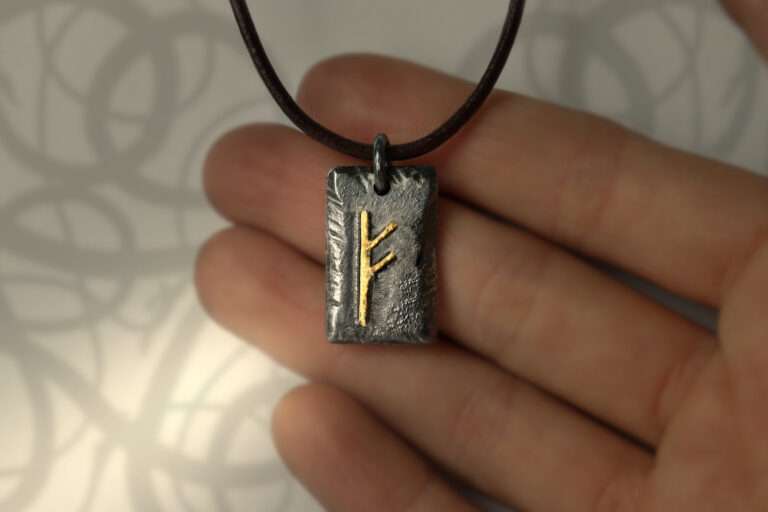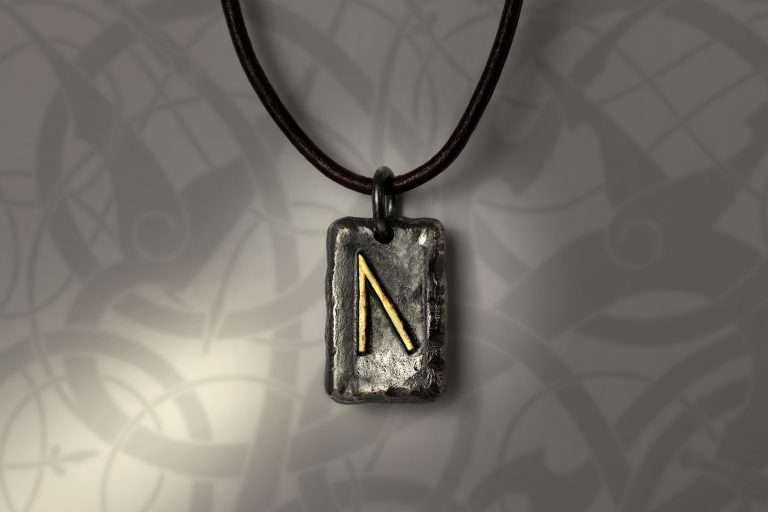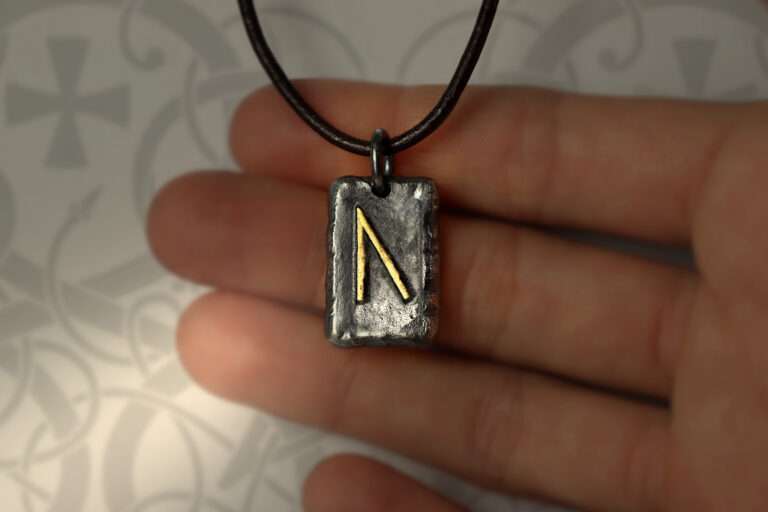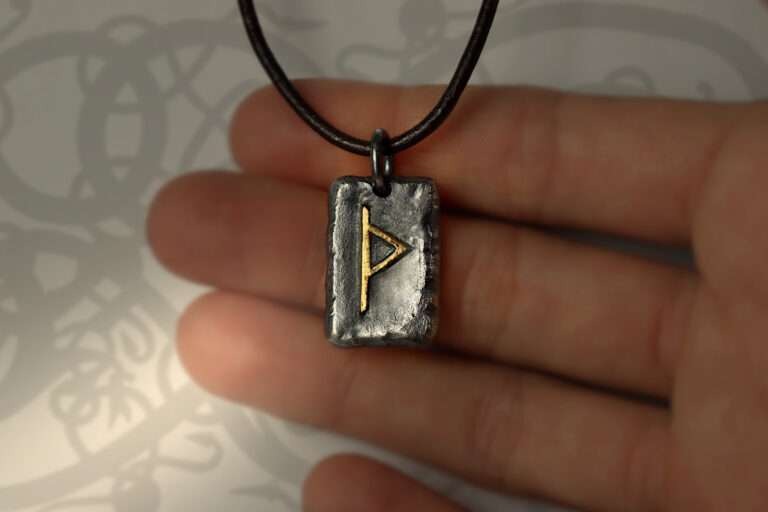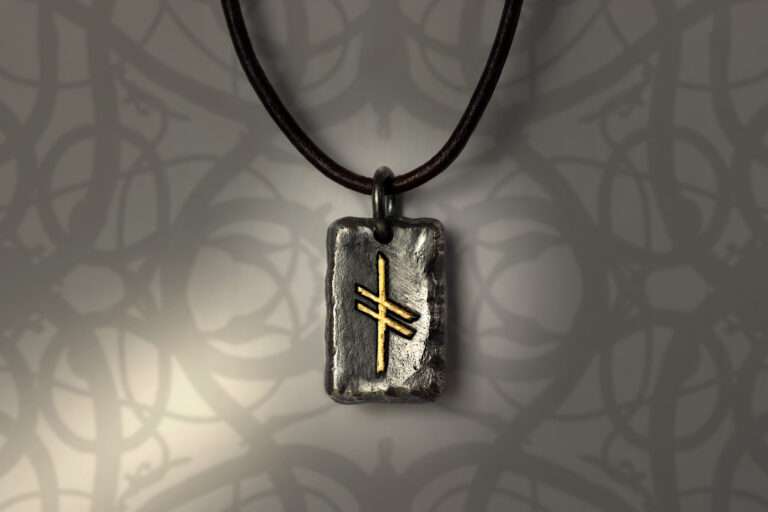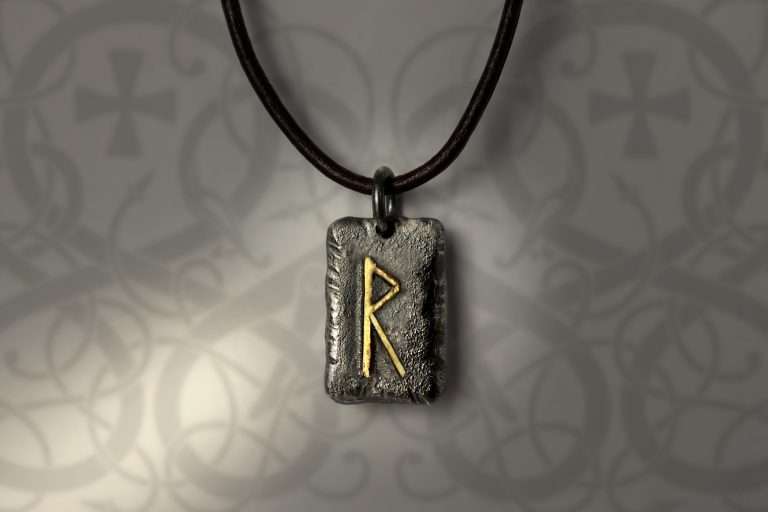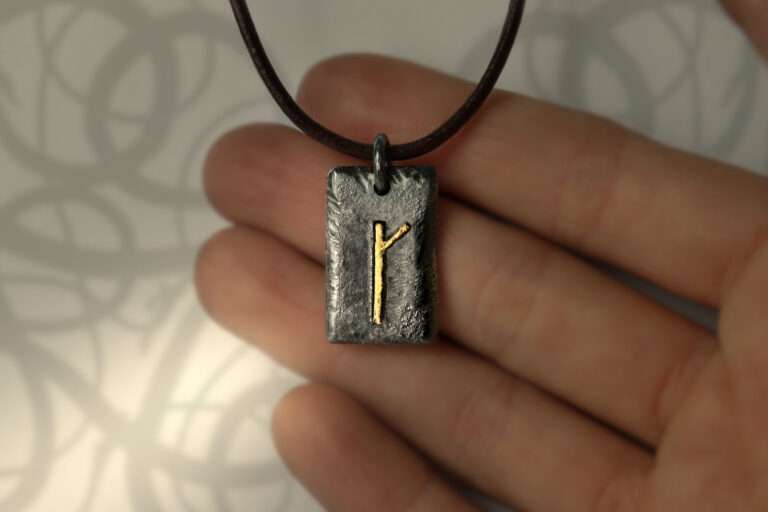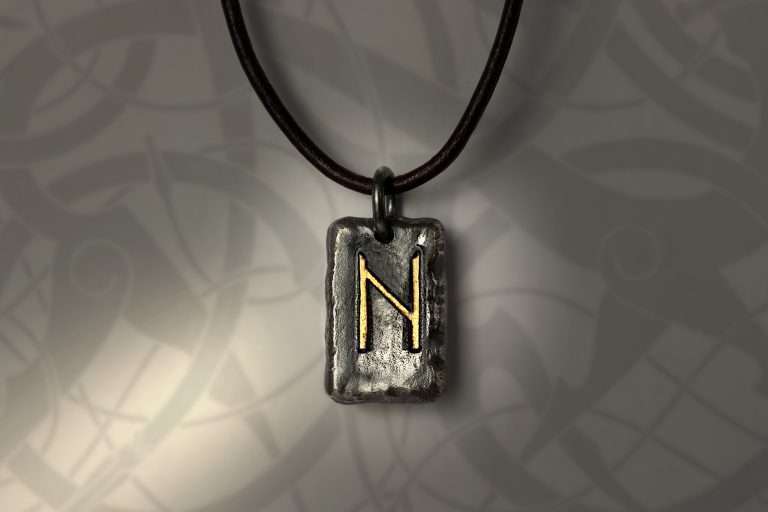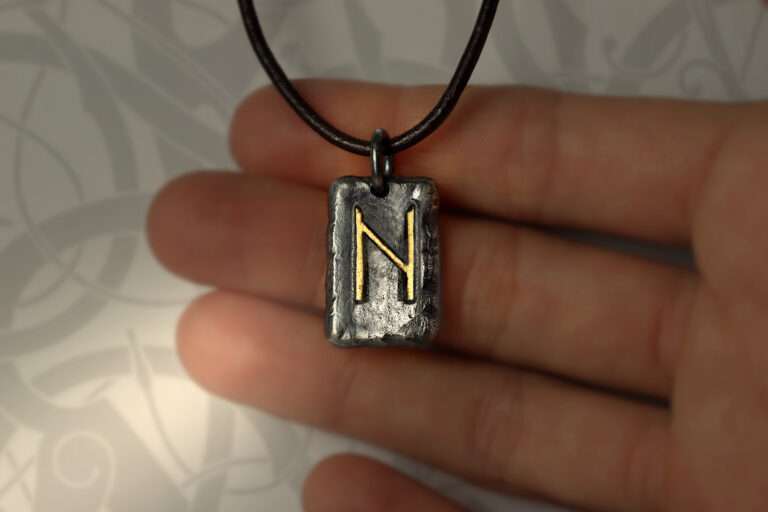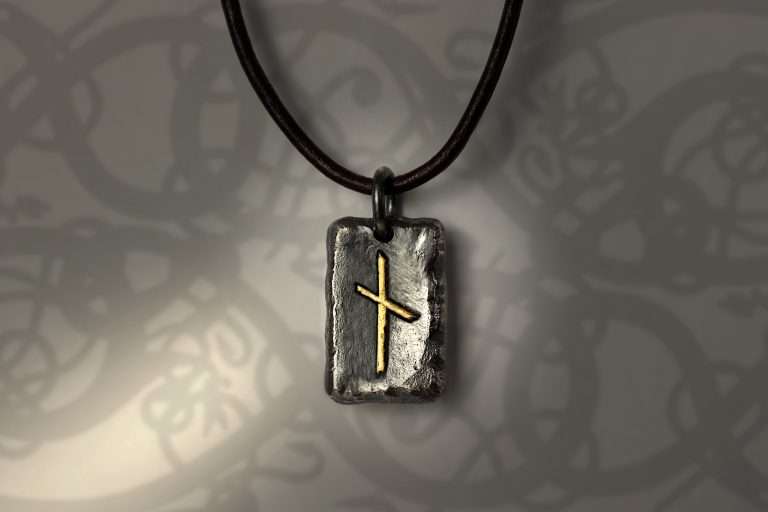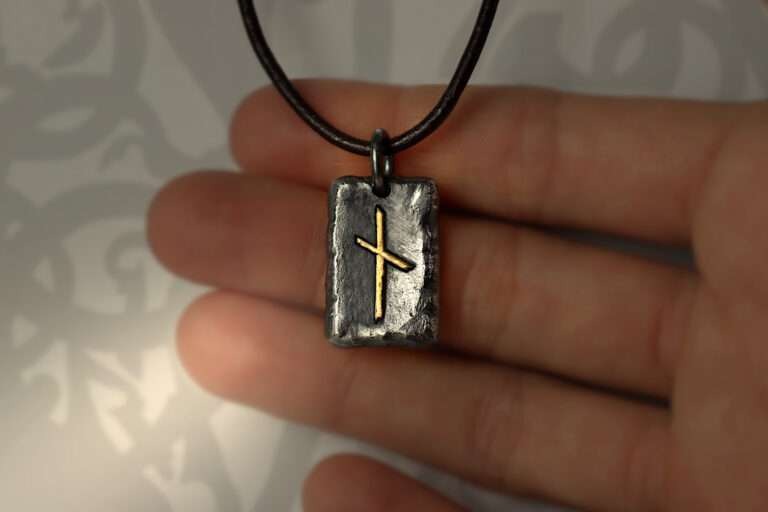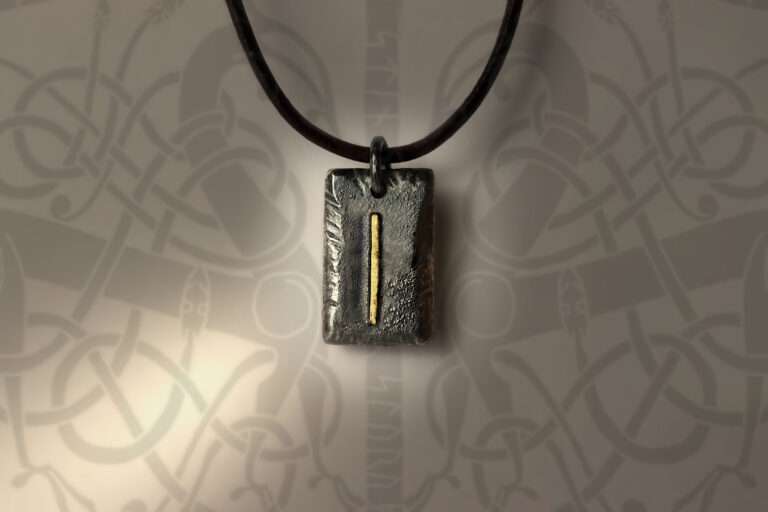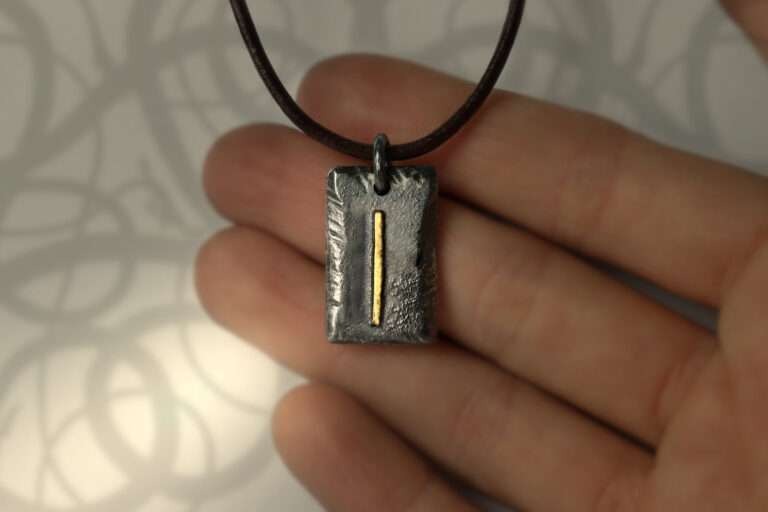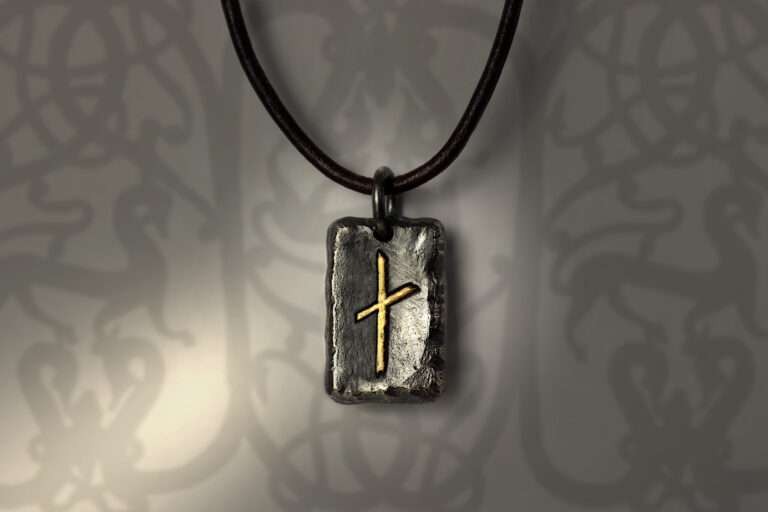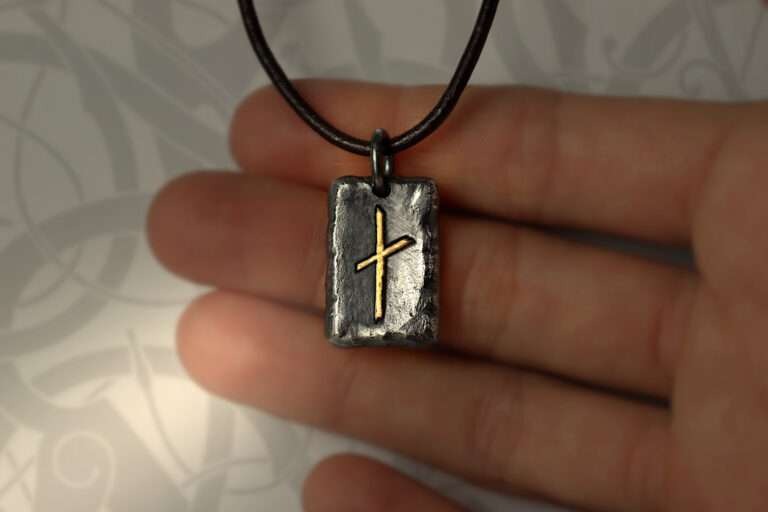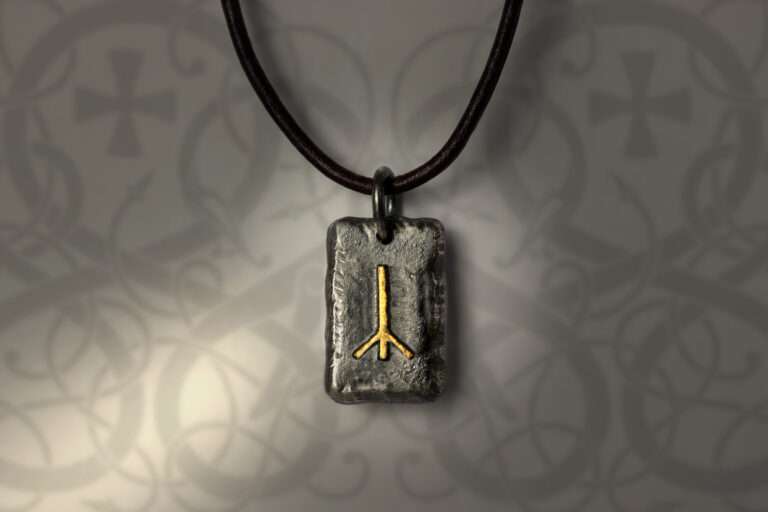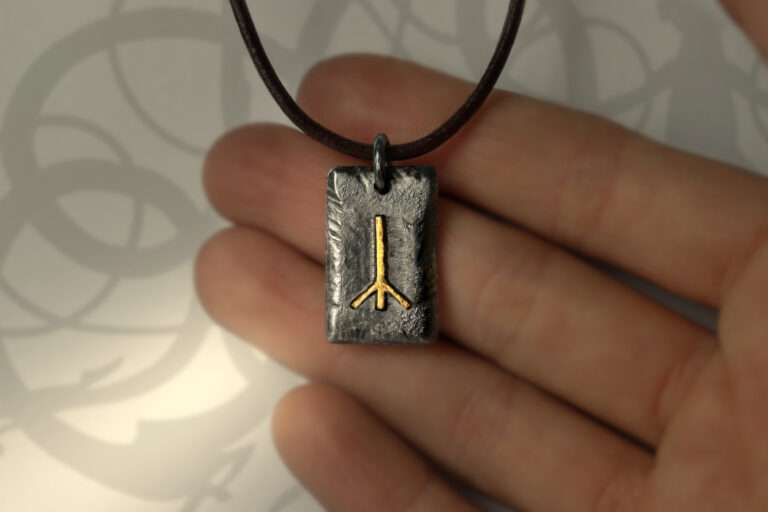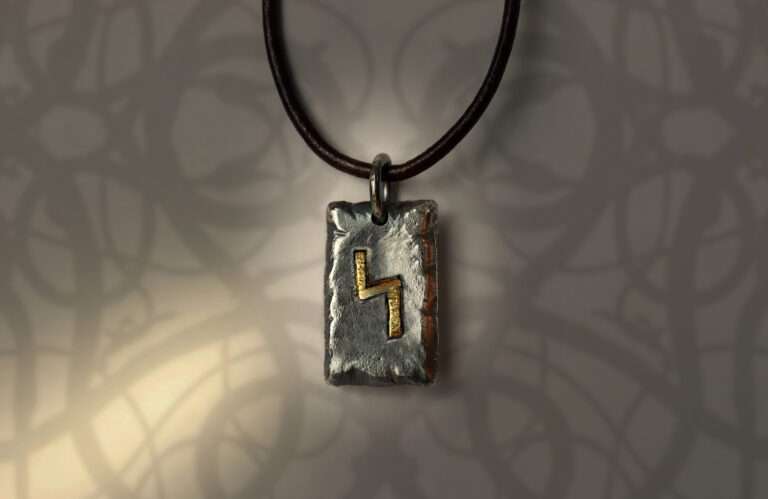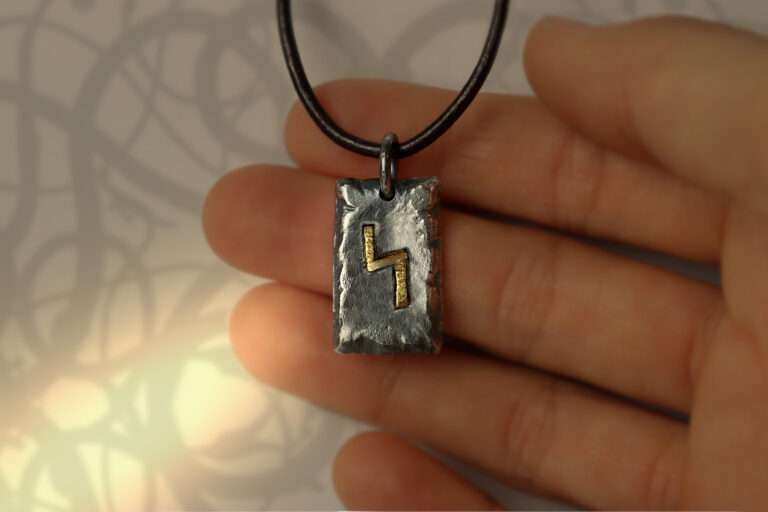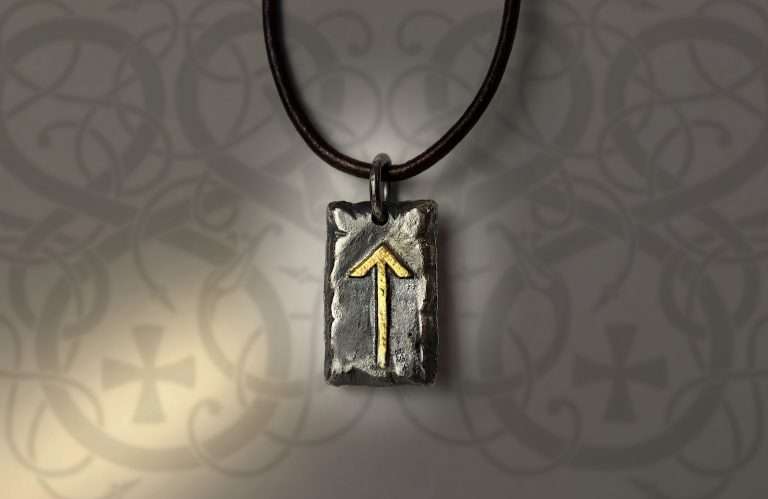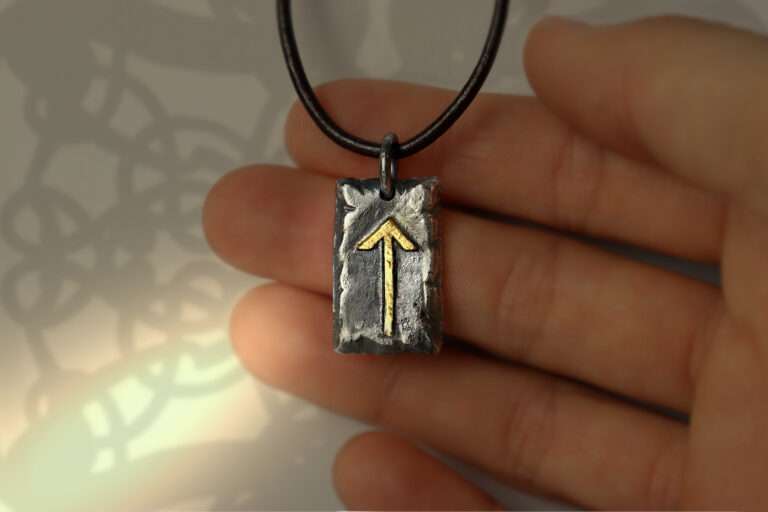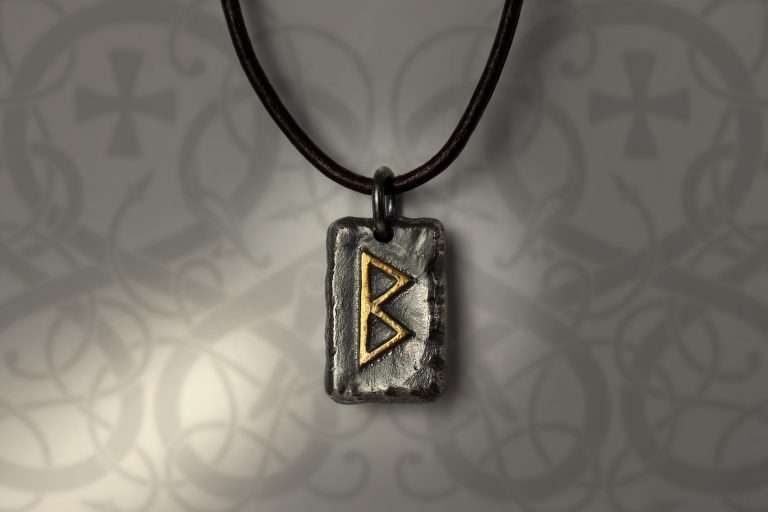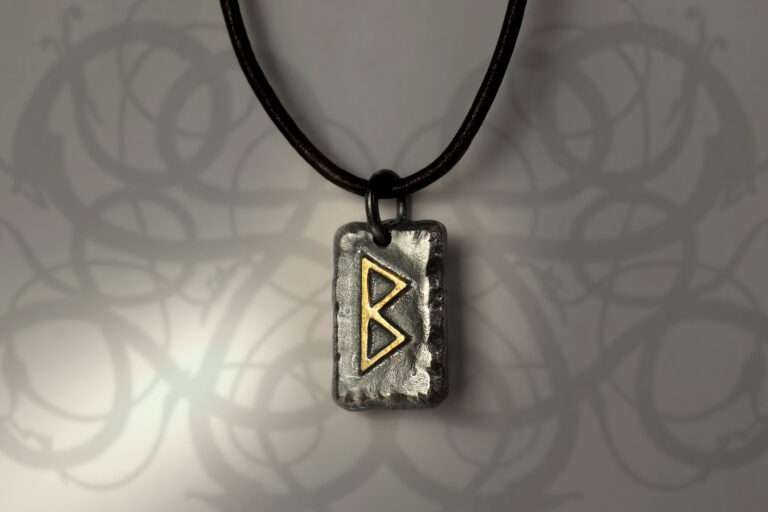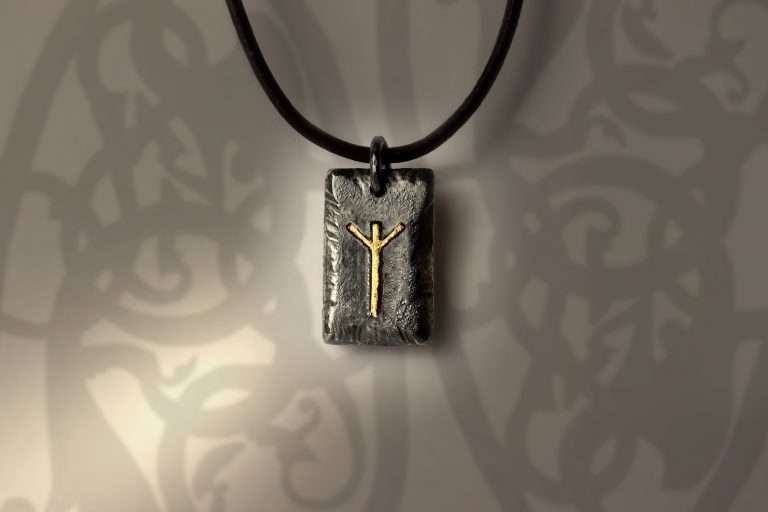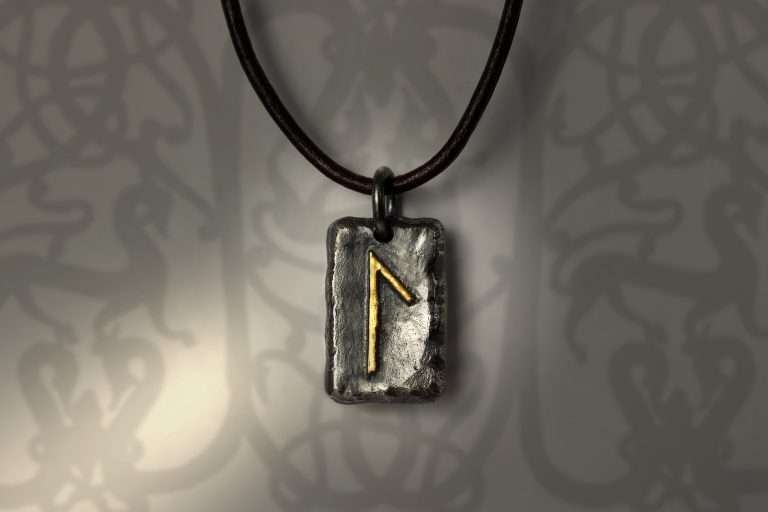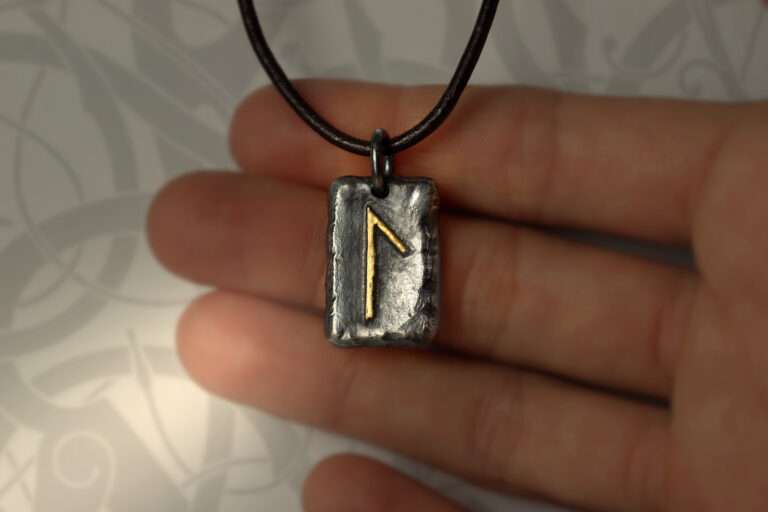Younger Futhark
This is our comprehensive guide on the mystical world of the Younger Futhark runes. The Younger Futhark runes acts as a streamlined successor to the Elder Futhark and served as the primary runic alphabet for the Norse people from the 8th to the 12th centuries, marking an era of rich Viking history and lore. This is the runic alphabet the Vikings actually used.
Unlike its predecessor, the Younger Futhark consists of fewer characters, each bearing a wealth of runic meaning, offering insight into the Viking way of life, their beliefs, and their practices in magic and everyday communication.
We examine each rune, exploring not just the phonetic value but the symbolic essence that these runes held for the Vikings. From tales of gods and heroes to everyday objects, the symbolism of the Younger Futhark runes offer a fascinating glimpse into a world where the mystical and the mundane intertwine seamlessly.
Click the associated rune in the gallery below to jump straight to that rune’s description.
FÉ
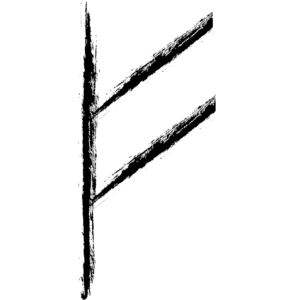
Fé in old Norse, representing the rune letter F or sometimes V, and fehu in proto-Germanic from the elder futhark means cattle or wealth. In old Norse times livestock was directly related to wealth and security, as it ensured one would not starve even if harvest failed.
Ef maðr grefr fe sit i iorð til hirzlo gull eþa silfr oc varðar þat fiorbavgs garð.
If a man digs his goods in the ground to hide gold and silver, he shall be punished with banishment.
Fé symbolizes material and spiritual prosperity, as well as the importance of sustenance and resources for survival. It signifies wealth not only in terms of tangible assets but also in terms of inner richness, including health, relationships, and personal growth.
Fé inspires a recognition of our innate ability to attract abundance and to manifest desires through focused intention and hard work. It emphasizes the cyclical nature of wealth, highlighting the importance of sharing and circulating resources to maintain balance and harmony. Fé encourages gratitude for the blessings already present in our lives while motivating continuous effort towards achieving greater prosperity and fulfillment in all aspects of existence.
-


Fehu Golden Glyph Rune Pendant Necklace
Fe Rated 0 out of 5 NOK 2010 Add to cartQuick View
Ur

Ur usually represents the rune letter U, but can also be interpreted as Y, O, V and W. In old Norse ur means dross (iron slag) or rain, while in proto-Germanic elder futhark it is known as uruz interpreted as "aurochs" (an ancient type of wild ox) or water. Aurochs was known as a formidable, wild beast. In modern Scandinavian languages ur means first or original and is used as a prefix - aurochs in Norwegian is urokse - "ancient ox". In this respect ur is a representation of our primal past.
Ginnungagap, þat er vissi til norðrættar, fylltist með þunga ok höfugleik íss ok hríms ok inn í frá úr ok gustr, en inn syðri hlutr Ginnungagaps léttist mót gneistum ok síum þeim, er flugu ór Múspellsheimi.
Ginnungagap, the part that faces the north filled with heavy and hard ice and frost and within there was rain and storm, while the southern part of Ginnungagap was lit up from flying sparks from Muspellheim.
Ur, meaning iron dross or slag, the byproduct of metal smelting, can be seen as representing the process of refining and purifying. Equally, it can also mean rain, further strengthening the interpretation as a symbol of purification and renewal.
Rain nourishes the earth allowing for growth and serves as a metaphor for cleansing and rejuvenation. It is also an essential life-giving force, a vital element for crops and to the Viking's sustenance, and therefore also channels ideas of both fertility and fruitfulness.
Equally, interpreting it's meaning as iron dross, the rune can represent the strength and resilience required to transform raw materials into valuable resources, highlighting themes of endurance and perseverance.
As a talisman, the Ur rune embodies the dual aspects of transformation and vitality. The rune's connection to both the nourishing rain and the refining process of iron underscores its message of resilience and renewal, making it an ideal emblem for those seeking strength and renewal in their life's journey.
-


Ur Golden Glyph Rune Pendant Necklace
Golden Glyph Pendants Rated 0 out of 5 NOK 2010 Add to cartQuick View
Thurs
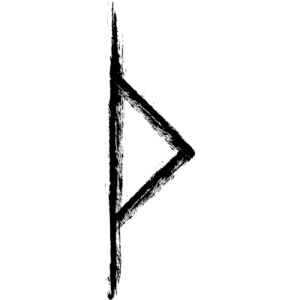
Thurs represents the rune sound TH most often written in this context as þ or ð. Thurs, or þurs, in old Norse or equally þurisaz/thurisaz, in proto-Germanic elder futhark is a kind of jotunn - a giant or ogre from Norse mythology.
Þrymr sat á haugi, þursa dróttinn,
greyjum sínum gullbönd sneri
ok mörum sínum mön jafnaði.Trym sat on the hill, the lord of the thurs,
twisted golden bands for his dogs,
and smoothed his horses' manes.
Giants or thurses in Norse mythology symbolised challenges, resistance, and the raw forces of nature. These beings represented immense power and the untamed aspects of the world, embodying natural phenomena that were both revered and feared. Thurs reflects the struggle against difficulties and the need for protection against the chaotic elements of life. It teaches the value of resilience and the strength found in facing adversities head-on.
For us, wearing the thurs rune can be a powerful symbol of our own battles with external and internal giants. It encourages us to confront our fears, to stand firm in the face of life's storms, and to seek strength within ourselves and our spiritual beliefs. Thurs inspires us to find balance amidst chaos, offering protection as we navigate through life's challenges. By connecting with the essence of thurs, we enhance our spiritual life, acknowledging the trials we face and the growth that comes from overcoming them, fortified by the ancient wisdom of resilience and perseverance.
-


Thurisaz Golden Glyph Rune Pendant Necklace
Golden Glyph Pendants Rated 0 out of 5 NOK 2010 Add to cartQuick View
Óss / As
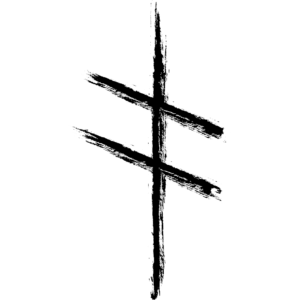

Óss is the viking rune letter A or O. Also sometime spelled as in old Norse and ansuz in proto-Germanic elder futhark means "God" or specifically it refers to the Æsir - the main family group of gods in Norse mythology. In the old Icelandic rune poem óss refers to Odin directly. The "long-branch" rune, mainly found in Denmark, has two diagonal lines across the middle going from top left to bottom right. The "short-branch" rune, mostly found in Sweden and Norway, instead has two diagonal lines going from the center down towards the right.
Óðinn er æðstr ok elztr ásanna. Hann ræðr öllum hlutum, ok svá sem önnur goðin eru máttug, þá þjóna honum öll svá sem börn föður [...]
Odin is the highest and oldest of the Æsir. He rules over all things, and no matter their power, all the other gods obey him like they were his children [...]
Odin was not only the god of war, but also that of wisdom and poetry. He importantly sacrificed one of his eyes to drink from Mimir's well, making him all-knowing. Odin has two ravens, Hugin and Munin, returning to him each day to relay him information of everything that happens. The summoning of Odin is an invocation of divine inspiration, the pursuit of truth and knowledge, and the ability to shape one's destiny through language and understanding.
Óss embodies the concept of communication, divine inspiration, and the transmission of wisdom from the gods. It signifies the power of speech, language, and the spoken word as vehicles for expressing truth, wisdom, and divine guidance. It encourages clear communication and effective expression, urging individuals to listen attentively to the messages of the gods and to communicate with integrity and authenticity.
Óss encourages us to recognize the importance of divine inspiration and spiritual insight in guiding our actions and decisions. It serves as a reminder that our words are the architects of our fates, and our silence the sanctuary of our thoughts. By attuning to the wisdom of the divine and speaking with honesty and clarity, individuals can align themselves with higher truths and cultivate deeper connections with the divine forces that shape our lives.
-


Óss / As Golden Glyph Rune Pendant Necklace
Golden Glyph Pendants Rated 0 out of 5 NOK 2010 Add to cartQuick View
Reið

Reid, the viking rune letter R, also sometimes spelled reið, in old Norse and raidō in proto-Germanic elder futhark means "ride" or "journey".
Högni hét konungr. Hans dóttir var Sigrún. Hon var valkyrja ok reið loft ok lög. Hon var Sváfa endrborin. Sigrún reið at skipum Helga [...]
A king was named Högne. His daughter was Sigrún. She was a valkyrie and rode through air and sea. She was Svava reborn. Sigrún rode to Helge's ship [...]
Reid symbolizes both physical journeys and inner quests for personal growth and enlightenment. It prompts individuals to embrace change, embark on new adventures, and navigate through life's transitions with courage and resilience. Reid also symbolizes the importance of balance and harmony in one's journey, urging individuals to stay grounded while pursuing their aspirations.
Reid encourages recognizing the interconnectedness of all journeys and the lessons to be learned along the way. By embracing the energy of reid, one can align themselves with the flow of life, embrace new experiences, and embark on a transformative journey towards self-discovery and personal evolution. The essence of reid emphasizes the journey's importance over the destination.
-


Raido Golden Glyph Rune Pendant Necklace
Golden Glyph Pendants Rated 0 out of 5 NOK 2010 Add to cartQuick View
Kaun

Kaun in old Norse, representing the viking rune letter K or G, or kaunan/kauna in proto-Germanic elder futhark is most often translated as "ulcer". However in actual use, kaun has been used to mean wound or scab. In this interpretation kaun can be a used as a reminder of our wounds and act as a healing talisman for them.
Kaun er bæygja barna,
bǫl gørvir mann fǫlvan.Kaun is children's curse,
the misfortune makes one pale.
Kaun symbolizes both physical injuries and emotional scars, highlighting the process of transformation and regeneration that follows adversity.
Kaun represents the journey of healing and self-restoration. It encourages confronting inner wounds, acknowledging past traumas, and embracing the healing process with courage and resilience. Kaun also symbolizes the importance of self-care and nurturing, urging us to prioritize emotional well-being and cultivate our inner strength.
It involves recognizing the transformative power of healing and the potential for growth that arises from overcoming adversity. By embracing the energy of Kaun, we can embark on a journey of self-discovery, find closure from past wounds, and emerge stronger and more resilient on the path towards personal wholeness and inner peace.
-


Kaun Golden Glyph Rune Pendant Necklace
Golden Glyph Pendants Rated 0 out of 5 NOK 2010 Add to cartQuick View
Hagall
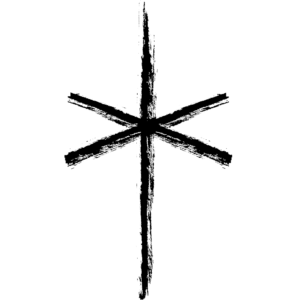
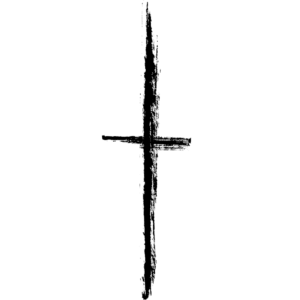
Hagall in old Norse, representing the viking rune letter H, and hagalaz/haglaz in proto-Germanic elder futhark means hail, as in the weather phenomenon where ice falls from the sky. The "long-branch" rune, mainly found in Denmark, has a central line with a cross in the middle. The "short-branch" rune, mostly found in Sweden and Norway, instead has a single shorter line crossing the center of the main line horizontally.
[...] ok nú tekr veðrið at ylgjast í norðrit, ok dregr upp ský dökkt ok dimmt með hafino, ok gengr upp með öllo skjótt;
en þat var í þat mund dags, er tók út eyktina,
ok dregr nú yfir skýit skjótt ok fylgir þegar jel, ok þótti þeim, sem þángat væri bæði eldíngar ok reiðar þrumor, því allir Jómsvíkíngar átto at vega í gegn jelino.[...] and now the weather began to change sharply in the north,
and there grew up a black and threatening cloud from the sea, and it rose with great speed;
it was at that time of day, half-past three,
and then it quickly clouded over, followed by hail,
and it seemed to them that it would be both lightning and angry thunder,
because all of Jomsvikings got the weather right against them.
Hail has the possibility to injure and damage, but it will always melt and become water. Hagall represents the transformation from something bad to something good, from something destructive to something life-giving. It can both be a representation of an external act, which had damaged us but we are looking to turn into something constructive, or it can symbol an internal shift in ourselves - a transformation of our own destructive thoughts or actions into positive and constructive insight.
Hagall signifies the inevitability of upheaval and the need to confront challenges with resilience and adaptability. It prompts individuals to embrace change as a natural part of life and to find strength in times of adversity. Hagall symbolizes the cleansing power of storms, purging away obstacles and paving the way for new growth and renewal.
By embracing the energy of Hagall one can navigate through tumultuous times with courage and grace, trusting in the process of change and finding opportunities for growth amidst the challenges. Hagall reminds us to remain resilient and to have trust in our inner strength, knowing that we have the power to weather any storm and emerge stronger on the other side.
-


Haglaz Golden Glyph Rune Pendant Necklace
Golden Glyph Pendants Rated 0 out of 5 NOK 2010 Add to cartQuick View
Nauðr

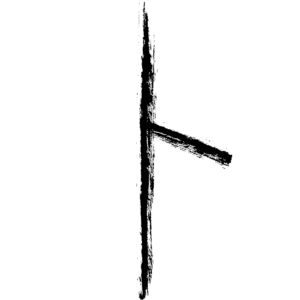
Nauðr in old Norse, representing the viking rune letter N, or naudiz in proto-Germanic elder futhark means need or hardship. The “long-branch” rune, mainly found in Denmark, has a diagonal line across the middle going from the top left to bottom right. The “short-branch” rune, mostly found in Sweden and Norway, instead has a diagonal line going from the center down towards the right.
Sátu síðan sjau vetr at þat, en inn átta allan þráðu, en inn níunda nauðr of skilði; meyjar fýstusk á myrkvan við, Alvitr unga, örlög drýgja.
Seven winters they sat together, in the eighth longing returned, in the ninth need separated them; the maidens longed for the dark forest, fate will decide for the young all-wise.
Naudr signifies the experience of lack, scarcity, and adversity in life. It prompts us to confront our needs and limitations with courage and resourcefulness, urging us to seek solutions and overcome obstacles through perseverance and determination. Naudr symbolizes the importance of resilience and self-reliance in times of hardship, encouraging us to tap into our inner strength and find creative ways to address our needs.
Naudr reflects the transformative potential of adversity and the opportunity for growth that arises from facing challenges. By embracing the energy of Naudr, we can navigate through difficult times with resilience and determination, knowing that hardship is often a catalyst for personal development and inner strength. Naudr reminds us to remain steadfast in our pursuit of solutions and to trust in our ability to overcome obstacles, emerging stronger and more resilient on the other side.
-


Naudr Golden Glyph Rune Pendant Necklace
Golden Glyph Pendants Rated 0 out of 5 NOK 2010 Add to cartQuick View -


Naudiz Golden Glyph Rune Pendant Necklace
Golden Glyph Pendants Rated 0 out of 5 NOK 2010 Add to cartQuick View
Íss
Íss in old Norse, representing the viking rune letter I, and isaz in proto-Germanic elder futhark means ice. Íss represents stillness, stagnation, and the frozen state of winter. Íss is a reflection of ice's dual nature: a serene yet treacherous force. It embodies the profound silence of the frozen expanse, the contemplative pause before action.
At kveldi skal dag leyfa,
konu, er brennd er,
mæki, er reyndr er,
mey, er gefin er,
ís, er yfir kemr,
öl, er drukkit er.At night praise the day,
a wife when she is burned [buried],
a sword when it has been proven [in battle],
a maiden when she is married,
ice when you have crossed,
beer when it has been drunk.
Íss signifies the need for patience, introspection, and inner reflection. It prompts us to embrace moments of stillness and solitude as opportunities for self-discovery and personal growth. It symbolizes the frozen state of the subconscious mind, urging us to look deep within our self to uncover hidden truths and insights.
Íss reflects the importance of embracing periods of stagnation and introspection in life. By embodying the energy of íss we don the mantle of the philosopher, navigating the silent corridors of thought with the measured pace of the contemplative. It is a reminder that in the heart of stillness lies the seed of action, that in the depth of winter's embrace we are invited to ponder our direction and purpose. We can cultivate inner peace and clarity amidst life's uncertainties, allowing space for inner transformation and personal evolution to unfold.
Íss reminds us to trust in the natural rhythms of life and to have faith that growth and renewal will emerge from moments of careful stillness and introspection. We are called to honor the silent spaces between our actions, to find within the cold a friend to our deliberations, and to emerge from introspection with the clarity of ice.
-


Iss Golden Glyph Rune Pendant Necklace
Golden Glyph Pendants Rated 0 out of 5 NOK 2010 Add to cartQuick View -


Isaz Golden Glyph Rune Pendant Necklace
Golden Glyph Pendants Rated 0 out of 5 NOK 2010 Add to cartQuick View
Ár

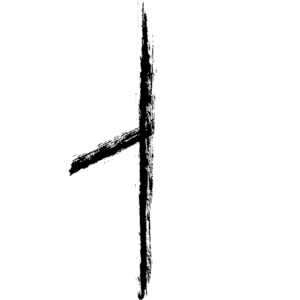
Ár, the viking rune letter A, means plenty or harvest in old Norse. It's equivalent in proto-Germanic elder futhark is jera. The "long-branch" rune, mainly found in Denmark, has a diagonal line across the middle going from top right to bottom left. The "short-branch" rune, mostly found in Sweden and Norway, instead has a diagonal line going from the center down towards the left.
Þá skyldi blóta í móti vetri til árs,
en at miðjum vetri til gróðrar,
it þriðja at sumri, þat var sigrblótThen they should blóta for a good harvest;
mid winter for a good crop,
and third time in the summer, that was a victory blót.
Ár signifies the culmination of efforts and the manifestation of desires. It prompts us to celebrate the fruits of our labor and to express gratitude for the blessings in our lives. Ár symbolises the abundance of nature and the importance of sharing and generosity in fostering prosperity and harmony.
Ár unfolds as a symbol woven with the threads of time, a representation of the earth’s generous cycles, yielding the fruits of human toil. It reflects the importance of gratitude and appreciation in cultivating abundance. By embodying the energy of Ár, we can cultivate a mindset of abundance and attract more blessings into our lives. Ár reminds us to acknowledge the abundance that surrounds us and to share our blessings with others, fostering a sense of community and interconnectedness that enriches the lives of all.
-


Ár Golden Glyph Rune Pendant Necklace
Ar Rated 0 out of 5 NOK 2010 Add to cartQuick View
Yr


Yr means yew-tree in old Norse. The rune represents the phonetic sound "ʀ" known as a voiced uvular trill, known for example from the French R-sound where the sound is created in the back of the mouth. This sound is also common in some parts of Germany, as well as in Denmark and the Western and Southern parts of Norway. The equivalent rune in proto-Germaic elder futhark is Eihwaz. Metaphorically it can also mean a bow as these were often made from yew trees. The “long-branch” rune, mainly found in Denmark, is similar to an inverse letter Y with the center line going down to the bottom. The “short-branch” rune, mostly found in Sweden and Norway, instead has a single straight, half-height line starting at the bottom.
Setr of vísa vitran
vígdrótt,
en þar hníga,
ýr dregsk,
við skotskúrum,
skjaldborg,
í gras aldir.The seat of the wise ruler,
the kings's warriors,
but the men protect,
bows are drawn,
against a hail of arrows,
shield wall,
in the grass they slump.
The yew is known for its longevity - we know of still standing yew trees that are over a thousand years old, while being extraordinarily poisonous except for the flesh of the berries - serving both as a life giver and a death bringer. The yew also has properties which makes it the optimal wood to make bows from. To the Norse the yew likely held significant meaning. Scholars have gone so far as to suggest that the sacred tree at the Temple of Uppsala in Sweden was a yew.
To the Vikings, the yew would have underscored the cyclical nature of life and death, and represented endurance, transformation, and protection through its ability to transform into essential tools of both sustenance and defense.
Yr can serve as a potent emblem of resilience and perseverance through life's trials. It symbolizes our capacity for personal growth, even through challenges, and reminds us of the continuous cycle of rebirth and renewal. It encourages us to embrace change and can help protect us from negative influences, and support our spiritual journey towards understanding the interconnectedness of life and death, embracing the transformations that define our existence.
-


Yr Golden Glyph Rune Pendant Necklace
Golden Glyph Pendants Rated 0 out of 5 NOK 2010 Add to cartQuick View
Sól


Sól in old Norse, representing the viking rune letter S, and sōwilō in proto-Germanic elder futhark means sun. The "long-branch" rune, mainly found in Denmark, has an S-shape made with three strokes, where the first and last strokes are vertical and the middle stoke slightly upwards slanting from the left to right. The "short-branch" rune, mostly found in Sweden and Norway, instead has a single straight, half-height line starting at the top.
Sól er landa ljóme;
lúti ek helgum dóme.Sun is the light of the world;
I bow to the holy judgement.
The sun itself was an extremely strong symbol within Norse mythology, embodying light, life, and vitality.
The sun was absolutely central to Norse common life and the source of some of the most significant rituals such as blót, often celebrated in relation the the solstices. For a group of people who were cast into the cold and dark embrace of winter for a large part of the year, the sun would been a fundamental life giver. As such, the sun was central to the Viking cosmology and daily life and the sun's journey across the sky was a powerful reminder of the cycles of nature and the passage of time.
Sól was also a deity that drove the chariot of the sun across the sky, battling the forces of darkness to bring daylight to humanity. This endless cycle of night turning into day symbolizes the eternal struggle between light and dark.
We can interpret this struggle in the context of the human spirit, highlighting themes of hope, renewal, and the perseverance of life. Sól enables us to connect with one of the most prominent ancient energies, enhancing our spiritual life by reminding us of the light that is always present: day will always succeed night, light succeeds darkness. It encourages us to seek out growth, warmth, and enlightenment on our paths, offering protection against negativity and guiding us towards clarity and understanding. Sól helps us remember the importance of cycles in our lives, the constant presence of light and life, and our own inner strength to face challenges with resilience and optimism.
-


Sol Golden Glyph Rune Pendant Necklace
Golden Glyph Pendants Rated 0 out of 5 NOK 1990 Add to cart Quick View
Týr


Týr in old Norse, representing the viking rune letter T or D, and tiwaz/teiwaz in proto-Germanic elder futhark is named after the god Tyr. The "long-branch" rune, mainly found in Denmark, is similar to an upwards-pointing arrow. The "short-branch" rune, mostly found in Sweden and Norway, is similar to the long-branch, but with only the left-hand part of the arrow point.
Sá er enn áss, er Týr heitir.
Hann er djarfastr ok bezt hugaðr, ok hann ræðr mjök sigri í orrostum.
Á hann er gott at heita hreystimönnum.There is another Aas, called Tyr.
He is very bold and brave, and he decides over victory in war.
Warriors should invoke him.
Týr is the Norse god of war and justice, embodies principles of courage, sacrifice, and the lawful order of the cosmos. Týr was an important deity in Norse mythology, so significant as to have his own day - Tuesday, from Tiwesdæg, meaning Tiw's day, the old English name for Tyr. In current Nordic languages this also holds true. For example Tirsdag in Norwegian or Danish and Tisdag in Swedish all derive from the old Norse tysdagr.
As the quote above attests to, warriors should invoke Týr, who sacrificed his hand to bind the Fenrir, a symbol of the bravery required to uphold order and righteousness. Týr therefore represents not only martial valor but also the willingness to make personal sacrifices for the greater good, embodying a complex blend of justice, honor, and leadership.
Týr serves as a potent reminder of the values of courage, integrity, and the importance of making difficult choices for the sake of justice. It encourages us to face our fears and challenges with bravery and to stand up for what is right, even at a personal cost.
By embracing the spirit of Týr, we can draw upon ancient wisdom to navigate the complexities of modern life, enhancing our spiritual resilience and commitment to ethical action.
-


Týr Golden Glyph Rune Pendant Necklace
Golden Glyph Pendants Rated 0 out of 5 NOK 2010 Add to cartQuick View
Bjarkan
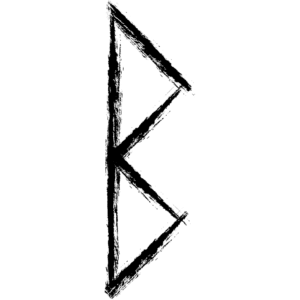
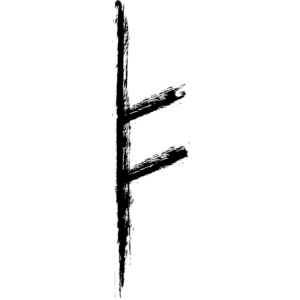
Bjarkan in old Norse, repersenting the viking rune letter B or P, and berkanan in proto-Germanic elder futhark refers to the birch-tree. The more common old Norse phrase for birch would be björk. The "long-branch" rune, mainly found in Denmark, is similar to a B, but with sharp corners. The "short-branch" rune, mostly found in Sweden and Norway, instead has two diagonal lines going from the center up towards the right.
Böðvarr sótti á fund Elg-Fróða, bróður síns.
Hann gerði umgerð at sverðinu af björk.Bødvar went to the meeting with Elk-Frode, his brother.
He made a scabbard for the sword out of birch.
The birch held significant importance to the Vikings, both symbolically and in their daily lives, and this importance has been carried forward to current day Nordic culture. Its wood was used for building, crafting tools, and making writing materials, while the sap provided sweet nectar.
Symbolically, the birch represented fertility, renewal and purification. Birch is one of the first trees to break bud in the spring, it was a herald of the end of winter and the coming of new life, embodying the cycle of rebirth and rejuvenation. Birch has been attested several times in the old Norse literature as a symbol of fertility and birth. Even today birch twigs are used to decorate Nordic homes during spring holidays. The birch was also believed to have a purifying effect, for example in Finland people will still use a bunch of birch twigs (known as vihta or vasta) to whip their backs said to clean the skin and relax the muscles. This made the birch a powerful symbol of new beginnings and cleansing.
From this follows that Bjarkan serves as a powerful symbol of fertility and a talisman valuable for couples looking to conceive, pregnant persons and new parents.
In a broader sense it can also be a representation of the fertility of ideas, projects, and personal growth. Bjarkan taps into the natural cycle of birth, growth, and rebirth. It encourages us to embrace change positively, to cleanse ourselves of past burdens, and to open our hearts to love and protection.
-


Bjarkan Golden Glyph Rune Pendant Necklace
Bjarkan Rated 0 out of 5 NOK 2010 Add to cartQuick View
Maðr
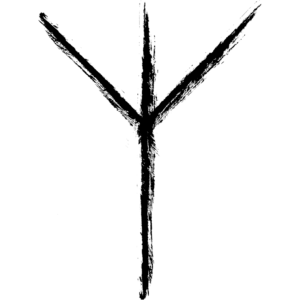
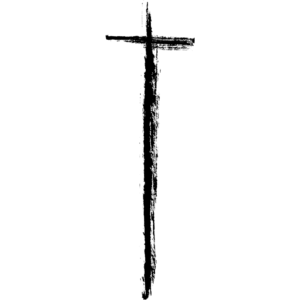
Maðr in old Norse, representing the viking rune letter M, or mannaz in proto-Germanic elder futhark means human, man or mankind. The letter has two possible styles. The "long-branch" rune, mainly found in Denmark, has a style similar to a person raising their arms towards the sky. The "short-branch" rune, mostly found in Sweden and Norway, instead has a short line or dot at the top, likely symbolizing the head of a person.
Hvat verðr þá eftir, er brenndr er heimr allr ok dauð goðin öll ok allir Einherjar ok allt mannfólk? Ok hafið þér áðr sagt, at hverr maðr skal lifa í nökkurum heimi um allar aldir.
What remains when the whole world is burnt and all gods and all einherjers and all humans are dead? You have said that all men shall live forever, in one world or another.
Maðr symbolizes the human experience, social order, and the interconnectedness of individuals within a community. It reflects on the aspects of personal identity, societal roles, and the collective human spirit, emphasizing the importance of relationships, cooperation, and the social fabric that binds us together.
Maðr serves as a powerful reminder of our connection to others and the collective journey of humanity. It encourages us to reflect on our role within our communities, promoting values of unity, empathy, and mutual support. Maðr inspires us to honor our relationships, to contribute positively to our social circles, and to recognize the strength found in collaboration and togetherness.
By embracing the spirit of Maðr, we enhance our spiritual life through the cultivation of meaningful connections and the recognition of our shared human experience, fostering a sense of belonging and mutual growth.
-


Maðr Golden Glyph Rune Pendant Necklace
Golden Glyph Pendants Rated 0 out of 5 NOK 2010 Add to cartQuick View -


Mannaz Golden Glyph Rune Pendant Necklace
Golden Glyph Pendants Rated 0 out of 5 NOK 2010 Add to cartQuick View
Lögr

Lögr in old Norse, representing the viking rune letter L, means sea, lake, water or waterfall, while the same rune symbol in the elder futhark, lauguz/laguz/laukaz, means leek (equivalent to lauki in old Norse) or lake in proto-Germanic.
Lögr þvær flaust, en fagrir,
flóðs vaskar brim stóðum,
þar er sær á hlið hvára
hlymr, veðrvitar glymja.The lake washes the ship, but gently,
the sea surface washes steadily,
in that place where sea and river meet,
noise, the weather-beast splashes.
For the Vikings, water and the sea was not just a vital resource but an integral part of life, serving as a pathway for exploration, raiding, and trade. Mastery of seafaring was a source of power, prestige, and vital for their survival and expansion, enabling the Vikings to amass wealth and resources and expanding their cultural influences.
Based on this lögr inspires a deep connection to the nurturing forces of nature and our own potential for growth and regeneration. Lögr is life-giving, granting the bearer strength, resilience, fertility and good health. It also motivates us to embrace the life-giving aspects of our existence, encouraging us to flow with life's changes and to cultivate fertility in our thoughts, actions, and relationships. By embracing the essence of lögr we tap into the ancient wisdom that recognizes the vital forces of both water and earth as fundamental to nurturing the seeds of our future.
-


Laguz Golden Glyph Rune Pendant Necklace
Golden Glyph Pendants Rated 0 out of 5 NOK 2010 Add to cartQuick View


